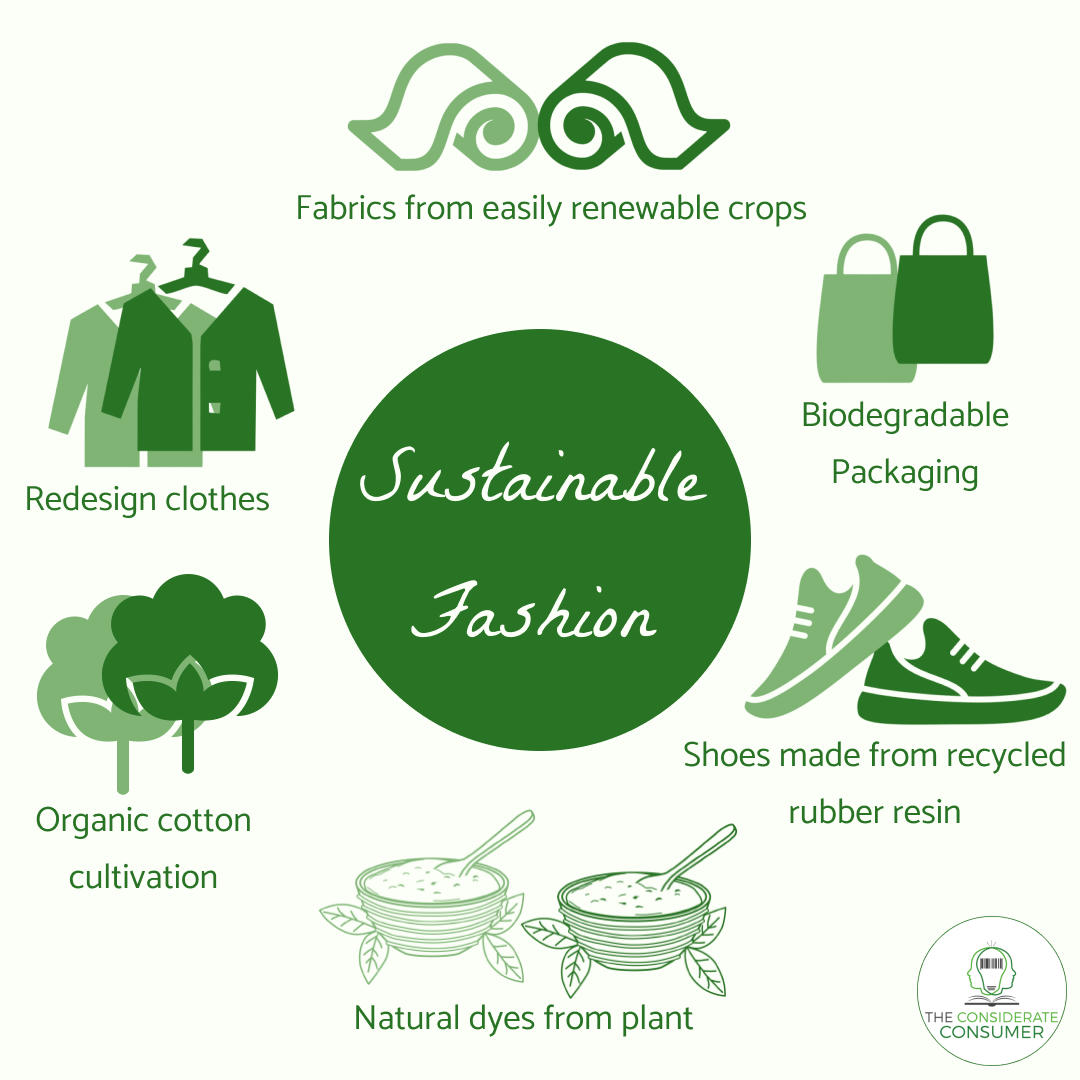Exploring the Surge of Cape Town Sustainable Fashion Brands
Exploring the Surge of Cape Town Sustainable Fashion Brands
Blog Article
Remain Ahead of the Contour by Checking Out Ingenious Fashion Trends
In an industry as dynamic as style, remaining ahead involves more than just following present fads-- it requires an exploration of development. The merging of technology and style proclaims a brand-new era of consumer engagement.

Accepting Smart Textiles
Recently, the style market has actually experienced a transformative change with the assimilation of wise textiles, a cutting-edge development that blends innovation with textile. This advancement represents not just a fusion of visual appeals and capability yet additionally a significant jump towards sustainability and customization in style. Smart fabrics, also called e-textiles, installed innovative electronics such as sensing units and conductive strings within the textile, making it possible for garments to engage with the environment or the wearer.
These fabrics are developed to monitor physical specifications, such as heart rate or body temperature, giving real-time health analytics. Beyond wellness applications, smart fabrics are additionally being used for adaptive garments, which can transform color or pattern in reaction to ecological stimuli, thus providing a dynamic style experience.
Furthermore, the advancement of energy-harvesting fabrics that generate power from motion or sunshine is leading the way for self-dependent wearable modern technology. This advancement is interesting environmentally mindful customers and developers aiming to decrease the environmental footprint of style. As study and advancement in this area advance, clever fabrics are expected to end up being significantly prevalent, reshaping the landscape of contemporary fashion with their multifunctional capacities.
The Increase of 3D Printing
Revolutionizing the production landscape, 3D printing has actually emerged as a game-changer in the garment industry. This innovative technology has actually allowed designers to push the boundaries of creativity, generating elaborate and personalized garments that were previously unbelievable. By leveraging electronic style and additive manufacturing, 3D printing helps with the creation of intricate geometries and patterns, allowing developers to explore new textures and frameworks.
A remarkable advantage of 3D printing in vogue is its ability to produce on-demand, lessening waste and minimizing inventory needs. This effectiveness not just optimizes manufacturing procedures but likewise permits for quick prototyping, making it possible for developers to bring their visions to life in a much shorter timeframe. Additionally, 3D printing sustains modification to a level unmatched by typical techniques, providing individualized fits and special layouts customized to individual consumer preferences.
The surge of 3D printing has actually likewise democratized fashion, making it accessible to emerging designers who can currently produce high-quality items without substantial monetary investment in traditional manufacturing framework. As technology continues to development, the fashion industry is positioned to harness the complete capacity of 3D printing, discovering new materials and strategies that will certainly redefine just how style is conceived and created.
Sustainable Style Developments
As the apparel industry comes to grips with the pushing demand for ecological duty, sustainable style advancements have emerged at the center of transformative adjustment. The expanding recognition of eco-friendly effect has actually fueled a shift in the direction of more eco-conscious techniques and materials. Designers and brand names are dig this now prioritizing sustainability, including approaches that lessen waste and reduce carbon impacts.
One significant advancement is the rise of round fashion, which stresses recycling and upcycling to extend the lifecycle of garments. This method not only decreases waste yet additionally urges customers to take on a more conscious method to clothing intake. Furthermore, the usage of sustainable materials, such as organic cotton, hemp, and recycled polyester, has actually acquired grip. These products require much less water and energy during manufacturing, considerably reducing ecological influence.
An additional innovation exists in the fostering of ingenious dyeing methods that utilize natural dyes or waterless procedures, consequently lowering the huge amounts of water and chemicals traditionally utilized in textile dyeing. Furthermore, innovations in biotechnology have led to the production of lab-grown leather and fabrics, using cruelty-free and eco pleasant choices to standard products. With these pioneering efforts, the garment industry is making purposeful strides towards a more lasting future.

Tech-Integrated Garments
Tech-integrated apparel represents a revolutionary blend of fashion and technology, improving exactly how people interact with their garments. This cutting-edge domain name is marked by the addition of smart textiles and ingrained digital components, boosting both functionality and visual appeal. From fitness trackers installed in sports apparel to heated jackets managed by means of smart device apps, tech-integrated clothing supplies customers unmatched benefit and versatility.
Introducing brand names are driving Full Report this pattern, concentrating on creating garments that react to ecological stimuli or user commands. For instance, some garments can transform shade or pattern in reaction to temperature level changes, while others incorporate biometric sensors to monitor health and wellness metrics like heart price or stress and anxiety levels. The seamless combination of innovation right into textiles additionally reaches environmental sustainability, with initiatives to establish self-cleaning fabrics or garments that change to weather, hence decreasing the need for numerous layers.
Furthermore, the development of wearable technology is not simply restricted to clothing but reaches accessories like watches and glasses, additional broadening the scope of tech-integrated fashion. As the industry continues to innovate, the potential for personalization and personalization in apparel expands, using customers unique, tech-enhanced style experiences that accommodate their private requirements and preferences.
Future of Virtual Fashion
Recently, the future of virtual fashion has become a transformative force within the sector, leveraging developments in digital modern technology to redefine just how fashion is produced, experienced, and taken in. By integrating augmented reality (AR), virtual fact (VR), and 3D layout devices, developers can now craft immersive and interactive experiences that go beyond typical fashion borders. Virtual fashion permits the creation of garments that exist only in electronic environments, providing endless opportunities for innovation without the constraints of physical production.
This digital shift not just provides possibilities for creative expression yet additionally addresses sustainability worries intrinsic in typical style practices. Cape Town Sustainable Fashion. By getting rid of the requirement for physical sources, virtual style lowers waste and lessens carbon impacts. Moreover, the surge of virtual fashion straightens with the enhancing consumer need for unique and tailored experiences, as virtual garments can be customized and tailored to individual preferences easily

Conclusion
The fashion market's future lies in the integration of cutting-edge innovations and lasting techniques. Online style is poised to redefine consumer interactions.
In recent find more info years, the fashion sector has actually observed a transformative change with the assimilation of clever textiles, a sophisticated technology that blends technology with fabric.As the style sector grapples with the pushing need for environmental duty, sustainable style advancements have emerged at the center of transformative change.In current years, the future of virtual fashion has arised as a transformative force within the market, leveraging improvements in digital modern technology to redefine how style is developed, experienced, and consumed. The increase of virtual fashion aligns with the increasing consumer need for unique and individualized experiences, as digital garments can be tailored and tailored to individual preferences with convenience.
The style industry's future lies in the combination of cutting-edge modern technologies and lasting methods.
Report this page